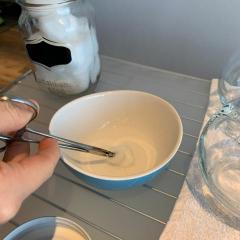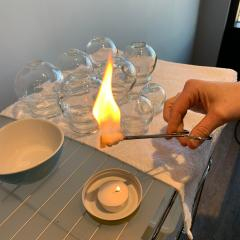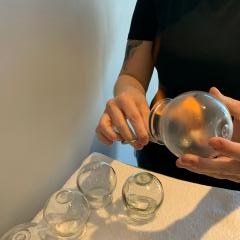Fire Cupping is a modality of Traditional Chinese Medicine and has been around for thousands of years.
Unlike most traditional manual therapy techniques, which compresses tissue (massage therapy), cupping provides negative pressure to skin, muscles and connective tissue. Glass cups or jars are placed on the skin to create suction; this creates a negative pressure which lifts the skin and tissue.
To create the suction, a cotton swab is soaked in rubbing alcohol and lit with a small flame. The swab is then moved in and out of the cup to remove oxygen. Once the oxygen has been removed, the flame is extinguished and then the cup is placed on the skin over areas of pain, discomfort, tension or trigger points.



By lifting the skin and increasing the volume of space underneath the skin, pressure is decreased on the pain receptions, fluid movement (blood flow and swelling) is improved, and pain is often lessened. By improving the circulation to an area, more nutrients can enter the injured area, and more waste products are able to be flushed, potentially allowing for faster healing.
What are the benefits of cupping?
- Increased circulation of fluids
- Decreased muscle tension and pain
- Increased Relaxation
What are some common conditions that are treated by cupping?
- Muscle tension
- Trigger points
- Pain from various degenerative conditions
- Tension or headaches
- Stress and anxiety
- Plantar Fasciitis (a disorder of the connective tissue which supports the arch of the foot)
Do you want to try fire cupping?
Book a fire cupping appointment with Acupuncturist and Registered Massage Therapist Erin Hubbell at our north office. Fire cupping can also be added to a massage therapy or acupuncture appointment with Erin. Please contact us and we'll be happy to help you choose the best appointment type for your needs.
What our clients are saying:
“I had other cupping done and in the past and I found it very effective and helpful so I was eager to try fire cupping! The cups were slightly warm on the skin which I found to be very relaxing, and the suction was greater than previous cupping sessions using silicon cups. The next day my muscles had far less tension than they normally would have had. I really enjoyed fire cupping."